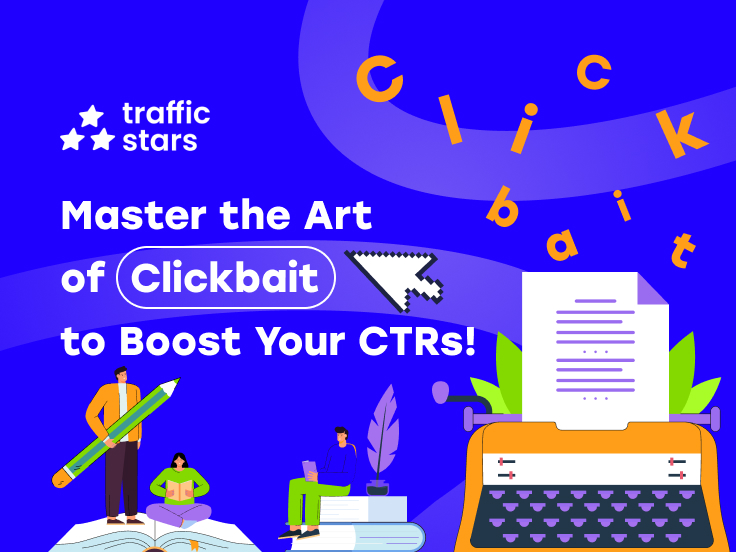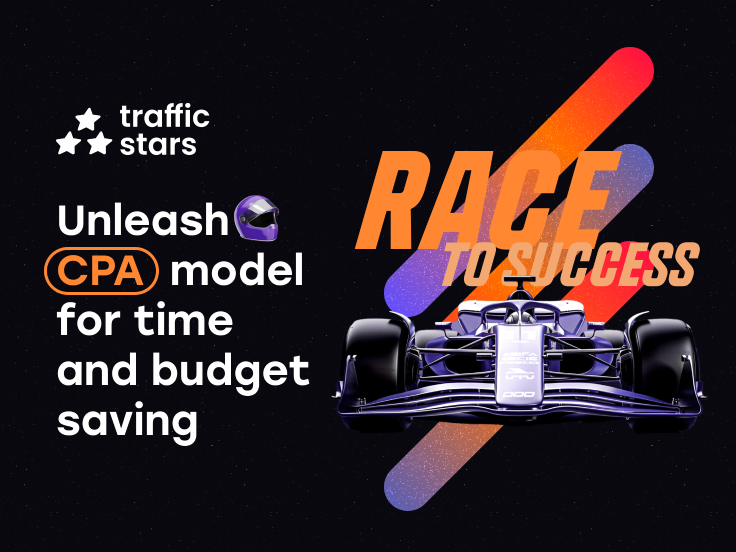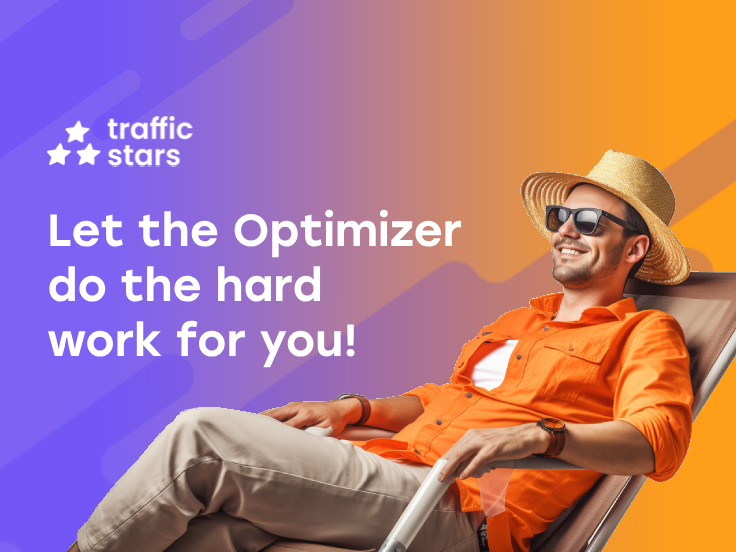
The Optimizer is a robust tool for TrafficStars ads optimization and automation. Fine-tune your ads, bids, and other parameters to achieve maximum conversions and a higher ROI.
For beginners, the Optimizer is an excellent feature to grasp the basics of ad optimization, providing user-friendly interface to kickstart your journey.
Experienced media buyers find ad auto optimization to be an indispensable assistant, offering automation and optimization options to save time and focus on critical tasks.
In this article, we'll explore the 10 best rules to use in ad optimization, enhancing the efficiency of your advertising campaigns.
#1 Low spot CTR
Identify and block spots with low click-through rates (CTR) using a rule based on 10 000 impressions. Low CTR may indicate irrelevant ads to the site audience.
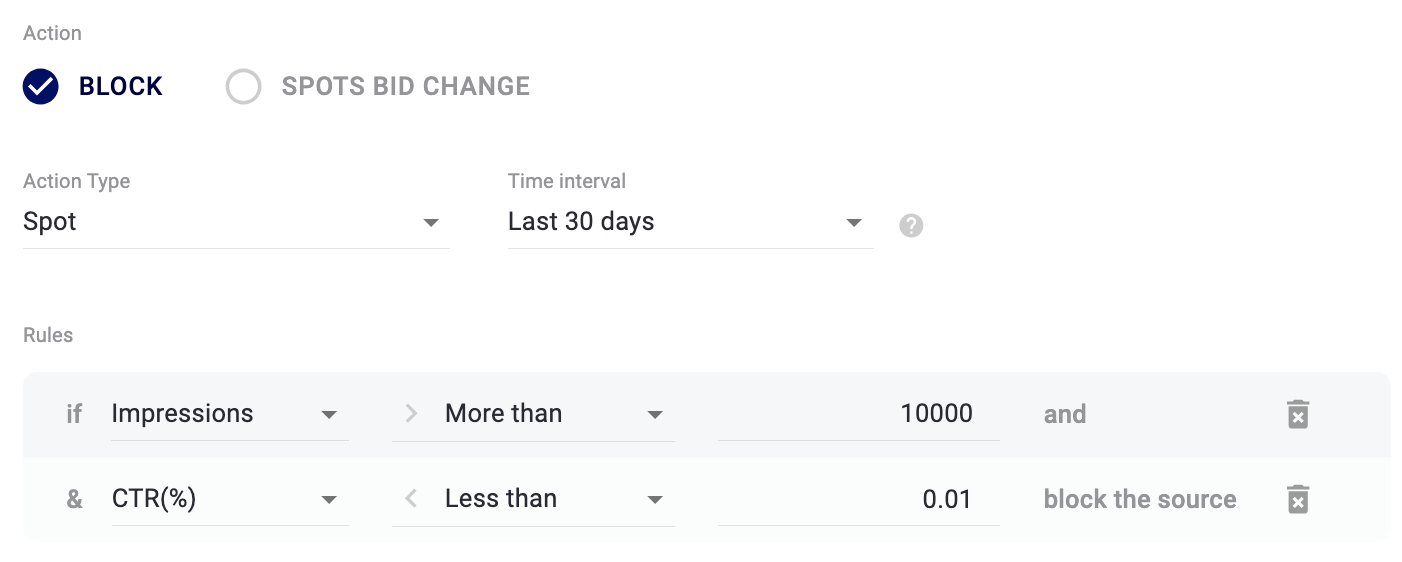
#2 Zero conversions
Block spots with zero conversions or leads. Calculate the spending level using 3 times the target Cost Per Acquisition (CPA). For example, if your target CPA is $2, set the spending level at $6.
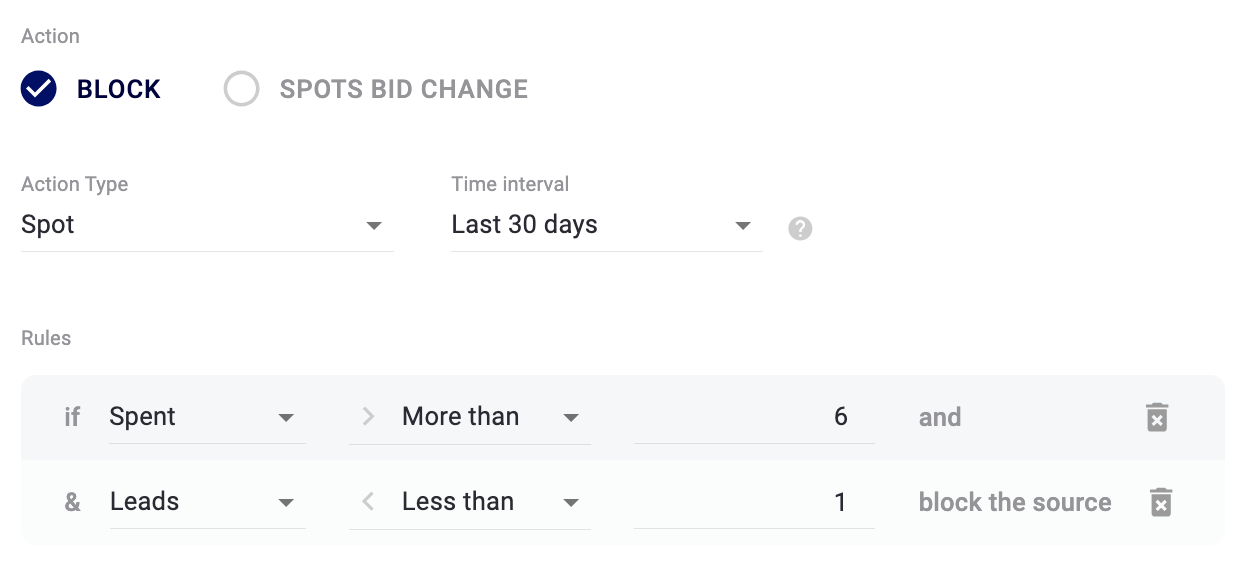
#3 Lead acquisition cost
Block spots with high eCPA or low ROI, optimizing lead acquisition costs.
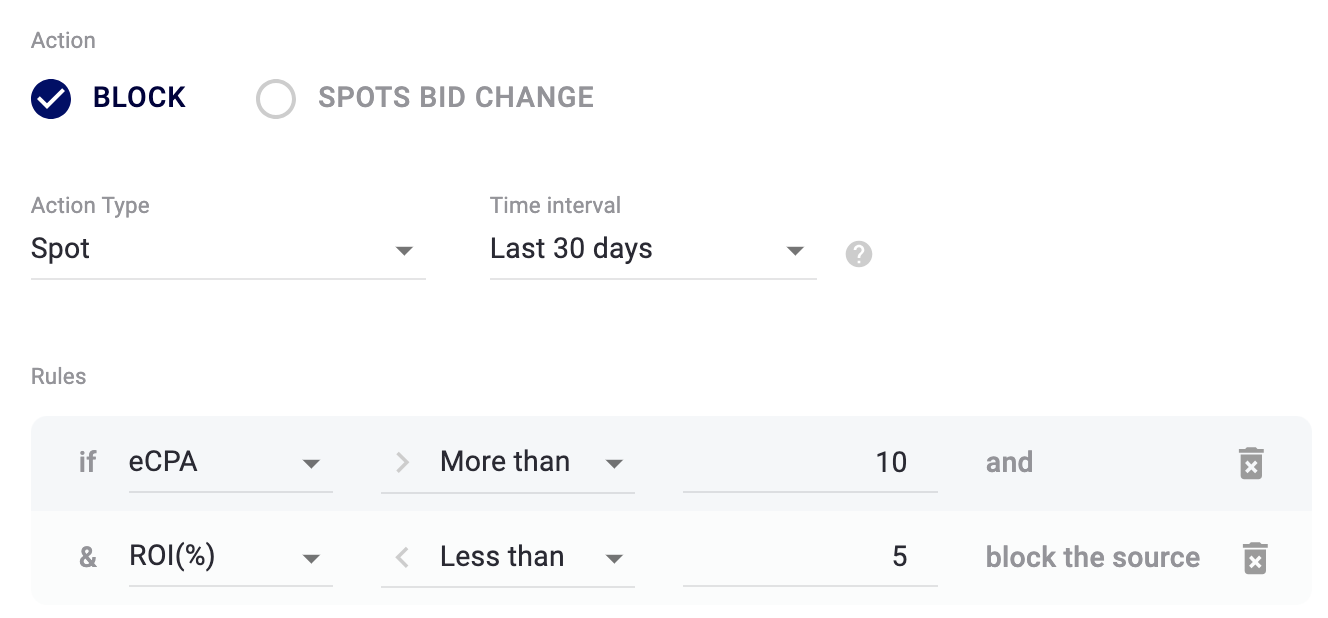
#4 Non-converting creatives
Set a budget for testing each creative and block those that don't convert. Use at least 5 creatives in each campaign to determine the most effective ones.
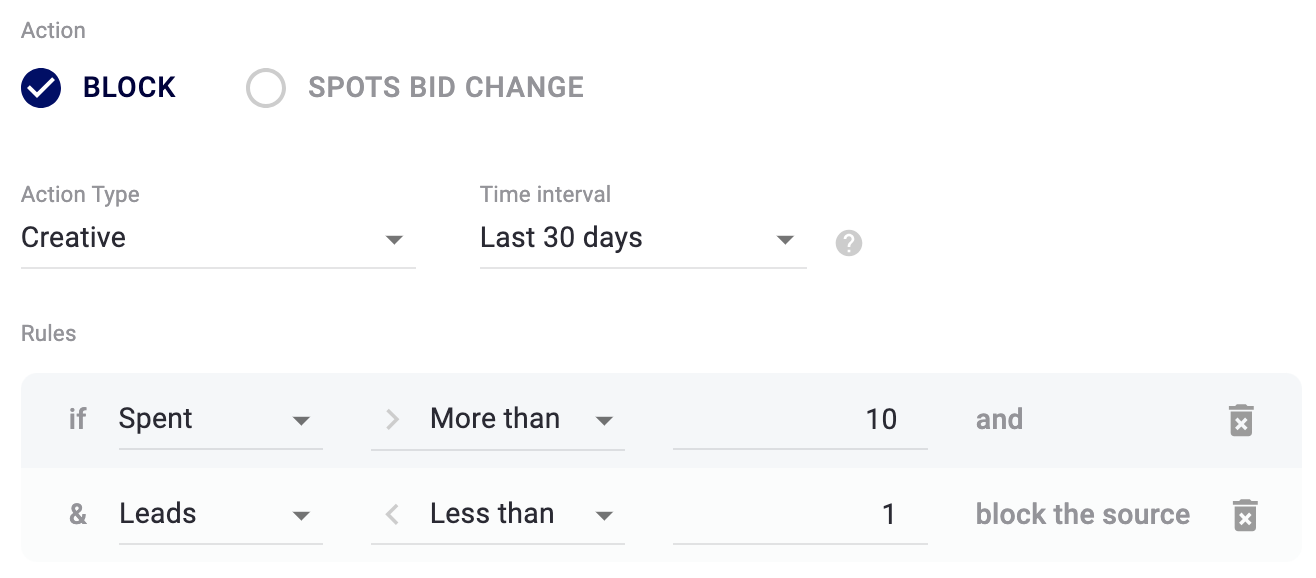
#5 Spot bid increase
Increase bids on spots with high ROI or low eCPA using data from the past week. Adjust bids depending on conversion frequency and desired traffic.
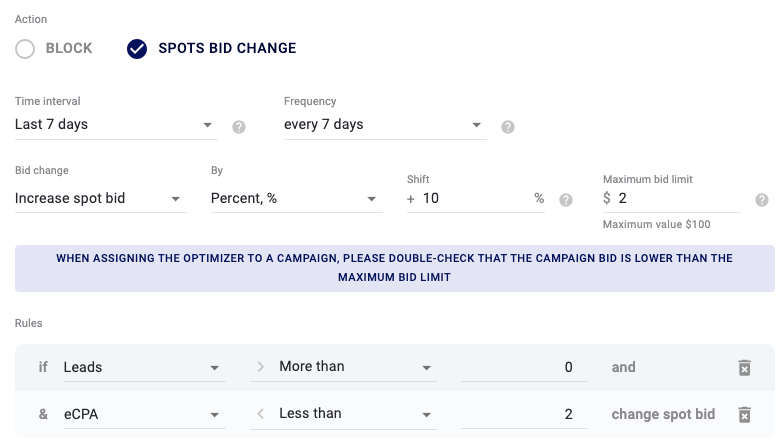
#6 Spot bid reduction
Decrease bids on spots with low ROI or high eCPA using data from the past week to optimize underperforming spots.
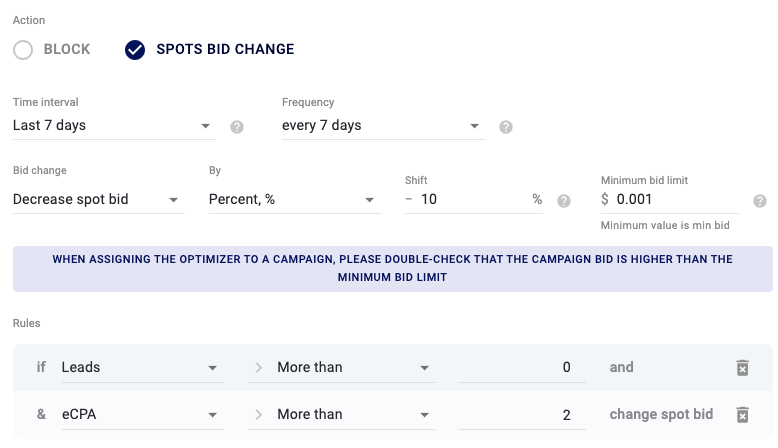
#7 Highly competitive spots
Raise bids every 2 days based on impressions data from the last 2 days, which is particularly useful in highly competitive spots for increased ad visibility.
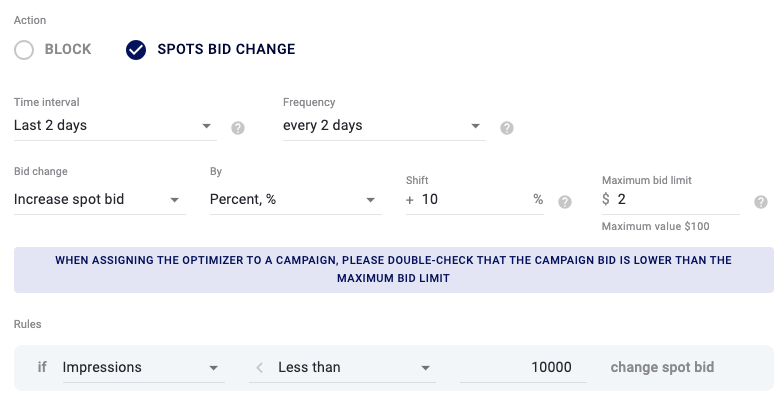
#8 Site blocking
Block sites with no conversions, even at a high CPA. Set a threshold of 10 times the target CPA and zero conversions.
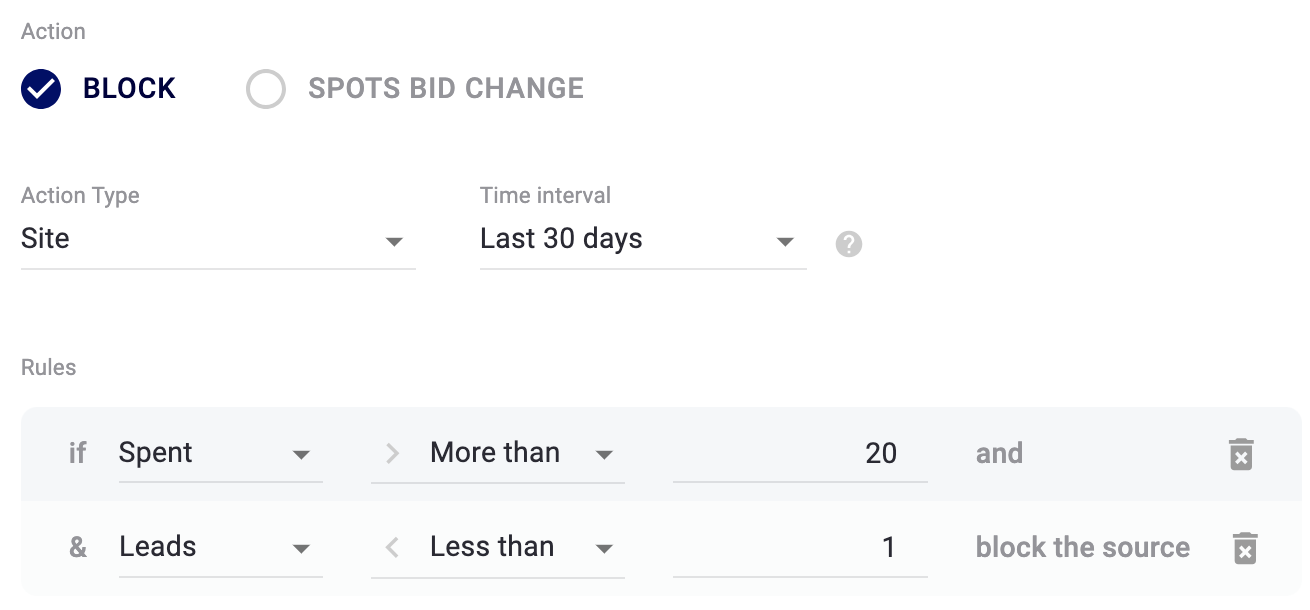
#9 Targeting blocking
Block underperforming targeting options, such as high eCPA, low ROI, or no conversions. Consider parameters like country, browser, operator, device, language, etc.
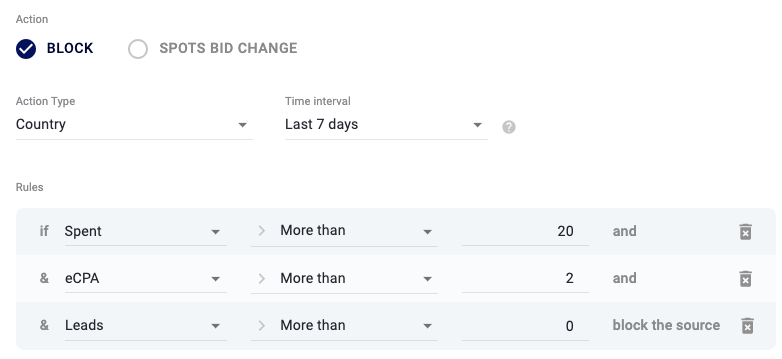
#10 EPC
Set this rule to block spots if the Earnings per Click (EPC) exceeds a specified amount, for instance, $0.1.
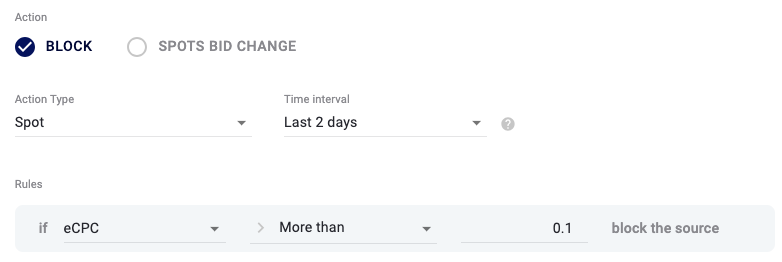
When creating rules, it's essential to understand your target CPA, which is the amount you're willing to pay per conversion.
In the examples on the screenshots, the target CPA is $2.
The multiplier for your target CPA depends on the number of targeted spots, sites, devices, etc., as well as the quantity of creatives in the campaign.
For instance, if you launch a campaign with very narrow targeting: 1 spot, iOS, and Safari browser, and let's say 2 out of 5 creatives perform well, for such a specific target, we recommend setting a rule based on eCPA, which equals your target CPA multiplied by 5. To increase ROI, simply reduce eCPA (e.g., multiply CPA by 3).
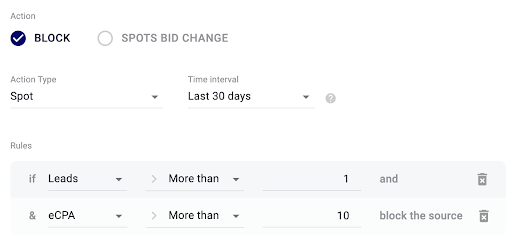
Postback and Pixel
To convey conversions to the Optimizer, configure a postback or pixel. A postback is a URL sent to your server after conversion, while a pixel is a JavaScript code added to your site or app.
📘 Learn more about setting up postbacks and pixels in this guide.


.jpg)
